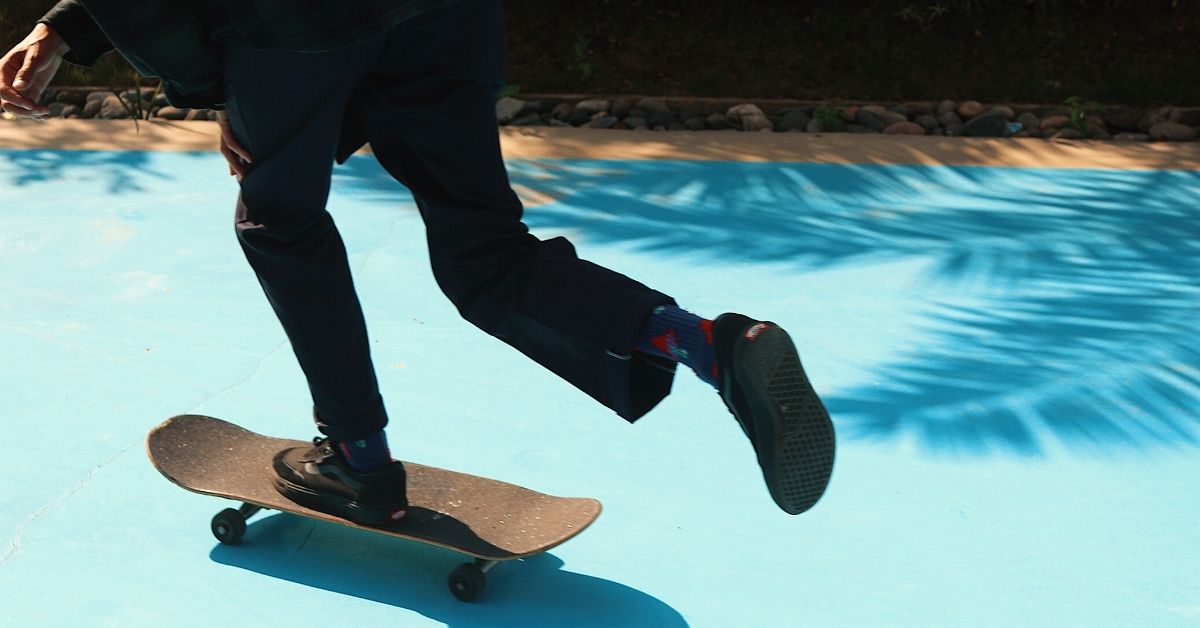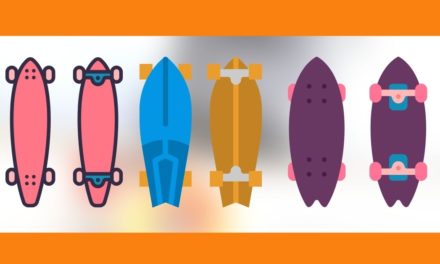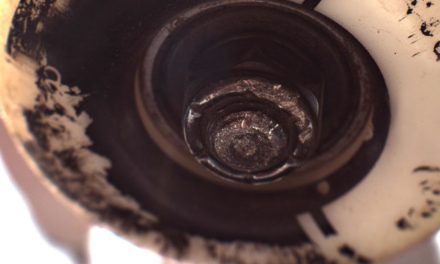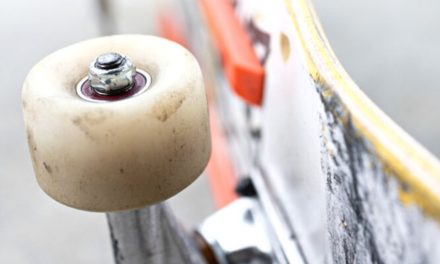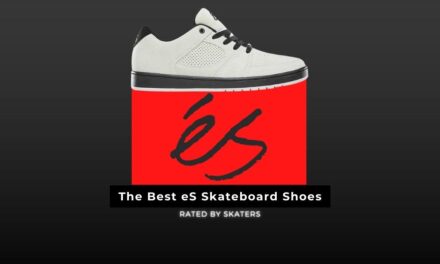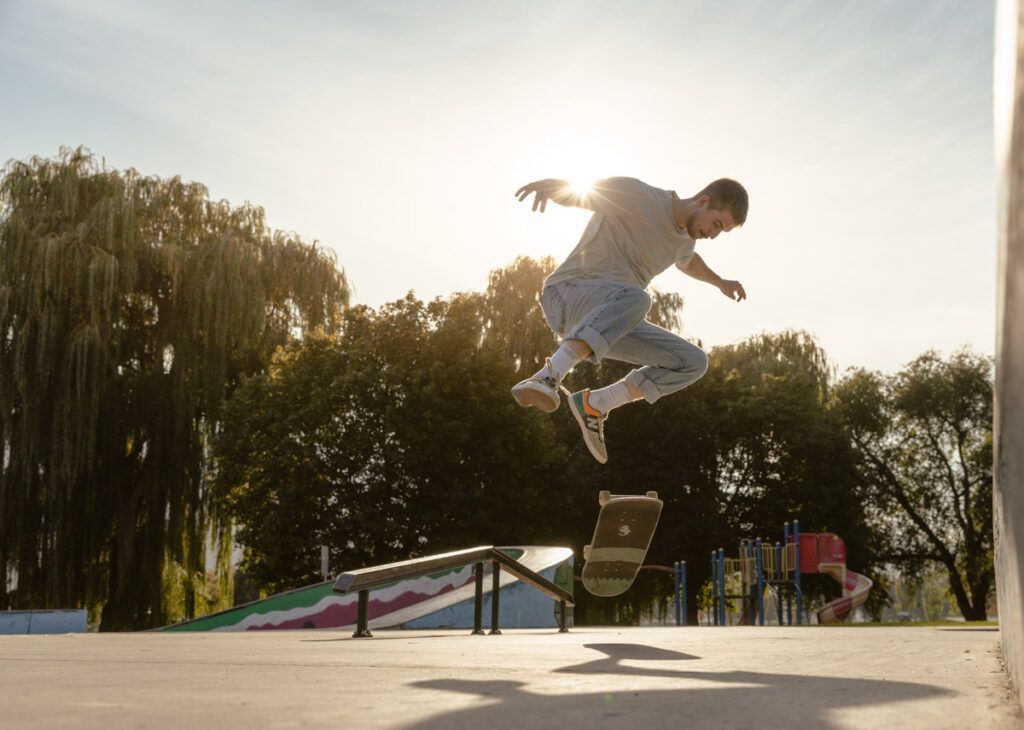When you notice your skateboard is slow, it’s pretty darn frustrating, to say the least. Luckily there are a few common reasons for this to happen, and they’re easy to fix!
The most common reason for a skateboard to be slow is from over-tightened axle nuts. When over-tightened, it pinches the bearing to the point it can no longer spin freely. To fix this, loosen the axle nuts so the wheel has a small amount of room to move on the axel. Now your board will roll faster!
Now, if you aren’t sure how to do this, don’t worry; I’ll break down exactly how to loosen them below. However, you may notice that this isn’t the issue you’re facing, and your wheels are spinning fine.
In that case, a few other scenarios may be holding your skateboard back from rolling as fast as it should.
So let’s break down what all these factors are and how you can fix them even if you’re a complete beginner!
Reasons Why Your Skateboard Is Slow
Let’s break down some of the most common reasons for this issue. In most cases, it has to do with the bearings or wheels of your board. However, your pushing technique can also play a factor.
1. Your Axle Nuts Are Too Tight
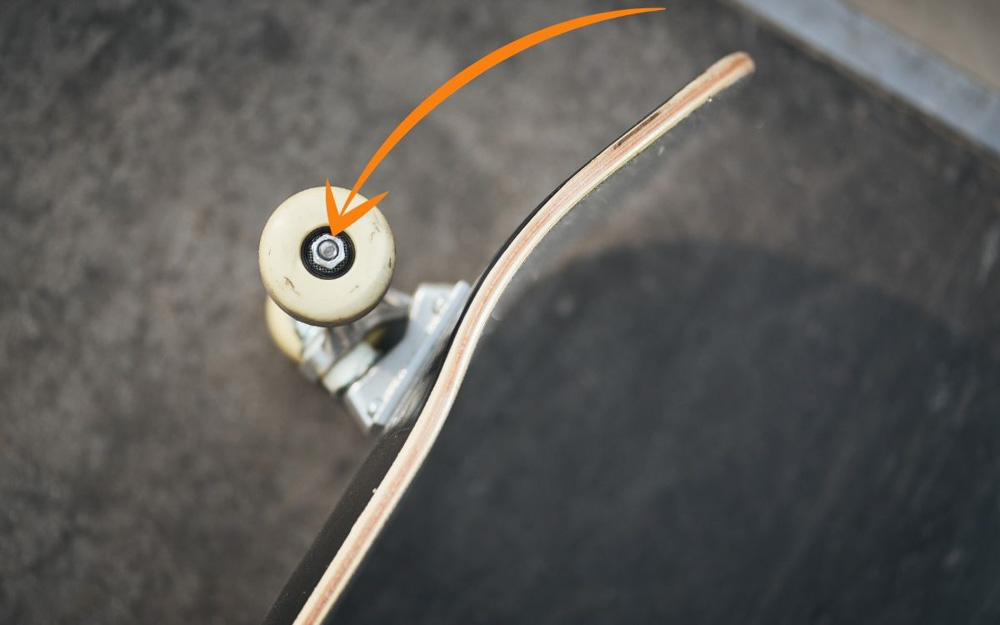
As I mentioned at the start of this post, if your axle nuts are too tight, your wheel won’t spin freely. Even if it seems like your wheels can spin fine, there can still be a lot of improvement by loosening the axle nut.
A clear sign that your axle-nuts are too tight is by pinching your wheel and trying to move it side-to-side on the axle. If you hear a “clicking” sound of the bearing bouncing off the nut and the truck, then your axle-nut is perfectly tightened. However, if you wiggle the wheel and it doesn’t make any noise or move at all, then you have likely over-tightened them.
So that means it’s time to loosen them a bit!
The easiest way to do this is with a skate tool, slowly loosening off the axle-nut until the wheel can wiggle side to side slightly. There should only be a few millimeters of play here, so the side-to-side movement of the wheel doesn’t affect your riding.
Make sure to check all four of your wheels as it’s easy to accidentally over tighten one or two. Even just one over-tightened wheel will make your board roll a lot slower. After all, since the bearing is pinched, it can’t spin freely without meeting added resistance from the axle nut.
With your axle-nuts at a better tightness, your board will roll noticeably smoother and faster than before!
2. Your Bearings Need To Be Cleaned
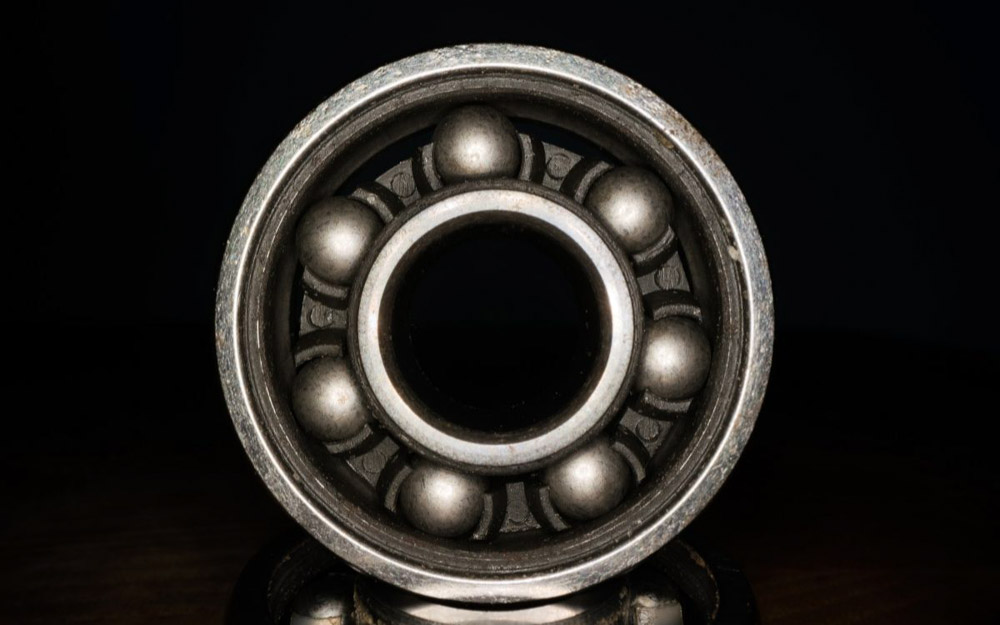
Now you’ve checked all your wheels, and over-tightened axle-nuts don’t seem to be the issue. Well, the next common reason for your skateboard to roll slowly is from dirty bearings.
Over time your bearings pick up a lot of dirt and dust that get between the balls, making it more difficult for them to roll smoothly. That’s why cleaning them out regularly will make a massive difference in how fast your skateboard is since your bearings will have less friction as they spin.
Unless your bearings are brand new, it’s safe to assume they could use a clean. The easiest way to clean skateboard bearings is with the help of bearing lube for a quick fix or Isopropyl Alchohol if you want a more in-depth clean. Let’s break down both of these options.
– The Quick Cleaning Method
If you don’t want to spend too much time with this, then adding a bit of bearing lube will work best. I recommend using something like Bones Speed Cream. Do not use WD-40 as a replacement, as it will leave your bearings bone dry and make them perform even worse.
What You’ll Need:
- A Skate Tool or 1/2″ Wrench
- Bones Speed Cream
- Razor Blade Or Thumbtack
- 10 Minutes Of Your Day
First, all of your wheels off your skateboard, then lift off the shield on your bearings. The shield is the colored rubber ring covering the balls inside your bearing. By placing a razor blade or thumbtack under the shield, they will pry off easily to expose the balls inside.
Now take your speed cream and add 2 to 4 drops evenly around the bearing. Then spin the wheel on the axle to ensure the speed cream disperses nicely around the entire bearing.
After you’ve done this to all of your bearings, put the shields back on by pressing them back onto the bearing with your fingers. Screw your axle nuts back on, and you’re ready to start shredding a lot faster than before!
– The Deep Clean Method
Although the speed cream works to make your skateboard faster, it often isn’t as long-lasting as if you do a deep clean. With a deep clean, you can get all of the grime out of your bearings and make an old set of bearings skate like new!
What You’ll Need:
- A Skate Tool or 1/2″ Wrench
- Bones Speed Cream
- Razor Blade Or Thumbtack
- Isopropyl Alcohol
- A small pastic container or a Bones Cleaning Kit
- 15-20 Minutes Of Your Day
This time you need to remove all of your bearings from your wheels. After removing your wheels, place the bearing about 1/4″ on the end of the axle and pry back on your wheel. This will lift the bearing out of your wheel without the need for any additional tools!
After removing your bearings, use a razor blade or thumbtack to lift the shields off your bearings. Make sure to place the shields, axle nuts, and washers in a safe spot so you won’t lose them.
Now fill your container with enough isopropyl alcohol to cover all your bearings once they’re placed in the container. If you’re using the Bones Cleaning Kit, add a small amount in the bottom since you can shake it around easier.
Placing your bearings in the solution, swish them around for a minute or two to get all the dirt and grime out of them. Once you’re done, take the bearings out and place them on a paper towel. Using latex gloves can be helpful to protect your hands in this case!
Hit the bearings open side against the paper towel to dislodge any excess dirt on the paper towel. If you want to go crazy, you can also use a toothbrush for an even deeper clean.
Lastly, add a few drops of speed cream to your bearings and slowly spin them to disperse the lubricant. Finally, place the shields back onto each of your bearings, place them in the wheels, then put them back on your skateboard.
After this deep clean, you’ll seriously be blown away by the difference if you’ve been skating dirty bearings for a while.
3. Your Wheel Size Is Different Than Your Friends
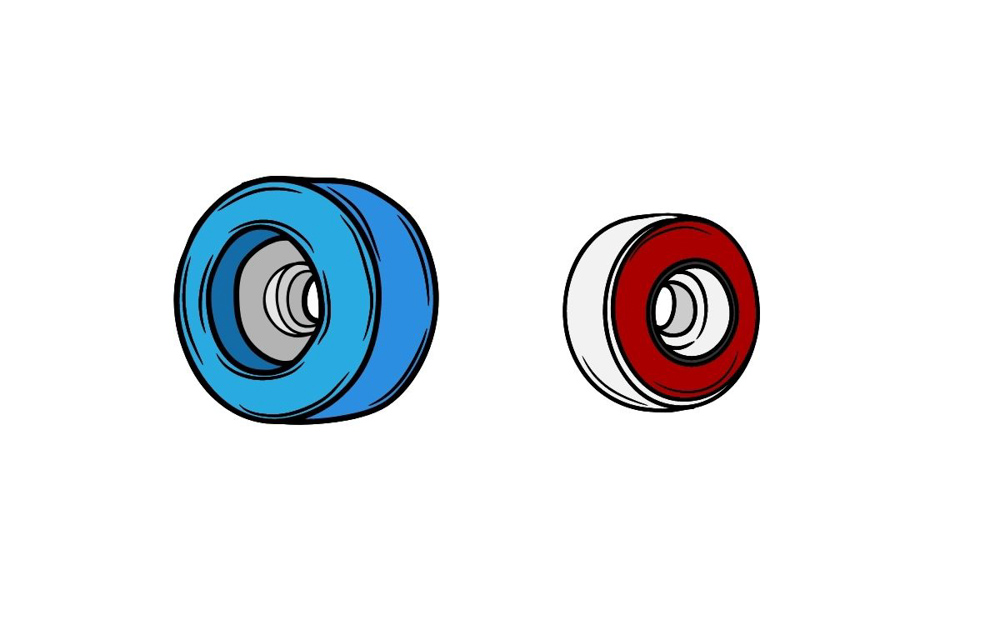
If you’ve been skating with your friends and notice that some of them are rolling a lot faster than you, wheel size can play a significant factor in this. In a nutshell, the larger your wheels, the quicker you will go. That’s often why a penny board will feel faster than a skateboard, simply because the diameter of the wheel is significantly larger.
Without getting too technical, think of it this way. A wheel with a larger diameter has more surface area to spin per rotation; therefore, it will cover more distance than a smaller diameter. That’s why you’ll often see bowl skaters riding larger wheels since it helps with gaining and keeping speed.
With that said, larger wheels come with some downsides as well. The main one is that they’re harder to control and aren’t as low to the ground. Also, with larger wheels, popping tricks can feel weird and make some things feel noticeable harder while street skating.
If you are solely focused on cruising around town and want to go as fast as possible, larger wheel diameter is the way to go. Unfortunately, there is no way to make your wheels any bigger than they are, so you’ll have to buy some new ones.
For cruising to work or school, for example, I would recommend 60mm – 65mm wheels.
Just make sure to get some risers to avoid wheel bite if you’re skating a regular concave skate deck!
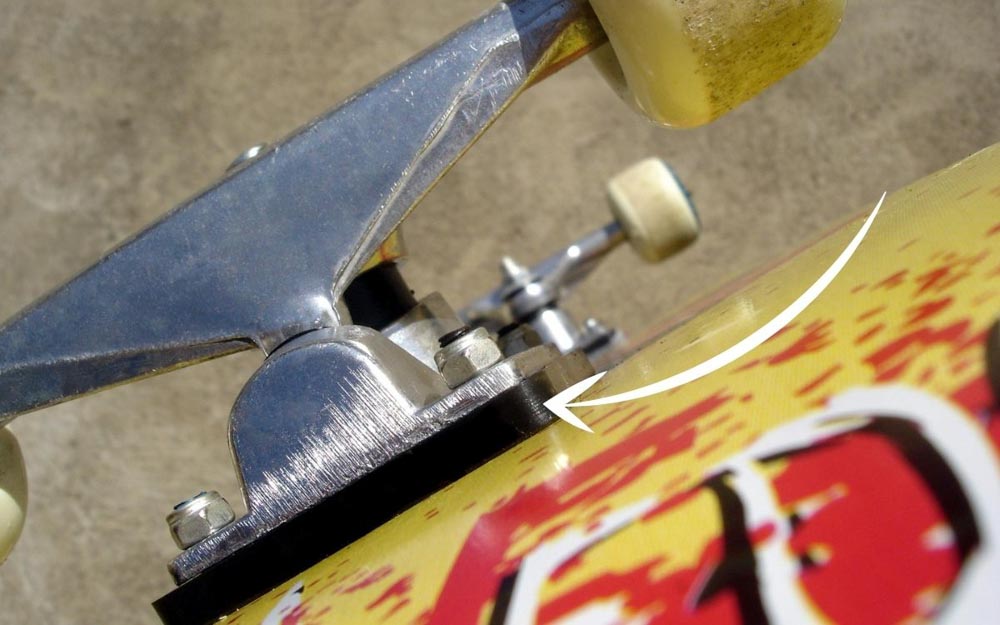
4. Your Wheels Have Flat Spots
Over time, or if you tend to powerslide often, your wheels can develop flat spots that affect how smoothly they roll. If you aren’t familiar, a flat spot is exactly what it sounds like. A flat section of a rounded wheel is typically caused by excess wear in a concentrated area.
As your wheel rolls over a flat spot, it loses momentum and will begin to slow down your skateboard. Not to mention that they aren’t fun to skate with since you feel constant vibrations underfoot from the flat spot hitting the ground.
You can tell if you have a flat spot in two different ways. The first and easiest way to tell is by simply riding your skateboard. If you hear a rather loud rattling sound, this is a clear sign of a flat spot. Try to feel out what part of your board the vibration is most noticeable to pinpoint which wheel is having the issue.
The other way you can find flat spots is by bringing your wheels to eye level and rotating them. If you notice any irregular pattern on the surface, you have probably seen a flat spot.
You can either wait it out or get a new set of wheels to deal with these. They will eventually wear away with minor flat spots as you continue to skate on them. Since there is more friction on the edges of the flat spot, it will eventually wear down to match the original shape of your wheel.
The only downside to that is you will need to put up with a bit of a bumpy ride until it smooths out.
If you have the money and don’t have the patience, then buying a new set of wheels is the faster solution.
5. You’re Skating A Low-Quality Complete
If you are skating a Walmart skateboard, for example, these skateboards come with much lower-quality components than a more quality complete. This can be especially noticeable with the wheels and bearings.
These cheap skateboards don’t have very long-lasting bearings, and it’s common for them to bind up and stop working altogether. If this binding gets bad, your bearings could fall apart entirely, making a dicey situation if you’re in the middle of skating.
Likewise, the wheels of these low-quality boards are often made of plastic and don’t wear the same as proper skate wheels. This can make the wheels more prone to flat spots, which will affect the speed of your board as well.
Ultimately if you are skating on one of these boards, the best solution is to buy a proper complete from your local skate shop. You’ll be blown away by the difference in feel, but most importantly, speed.
If you don’t have anywhere to go near you, there are tons of great completes available on Tactics Boardshop.
6. You Are Skating Lower-Quality Bearings
Since bearings are the root cause of how fast (or slow) your board rolls, the quality of bearings you choose certainly matter. If you are skating a Walmart board or have found some third-party knock-off bearings, for example, you will notice they’re not as fast as higher quality bearings.
This comes down to various factors, including the quality of materials, lifespan, and how much force the bearings can handle.
Material quality is number one as cheap bearings are more prone to rusting, jamming up, or becoming warped. With high-quality bearings, you can rest assured the bearings will continue to roll smoothly for years to come with the help of a regular cleaning cycle.
Going off of the quality, the lower quality bearings don’t have the same lifespan and will noticeably deteriorate over time, therefore affecting performance. Lastly, low-quality bearings can warp or fall apart under high impacts, so if you’re skating a drop, the impact could cause a poorly made bearing to warp or blow out, making it completely unusable.
Ultimately, if you want a faster skateboard, take note of what bearings you’re using. If you need an upgrade, the Bones Reds Bearings are some of my favorites since they are super long-lasting but still inexpensive.
7. Your Pushing Technique Isn’t Transferring Enough Power
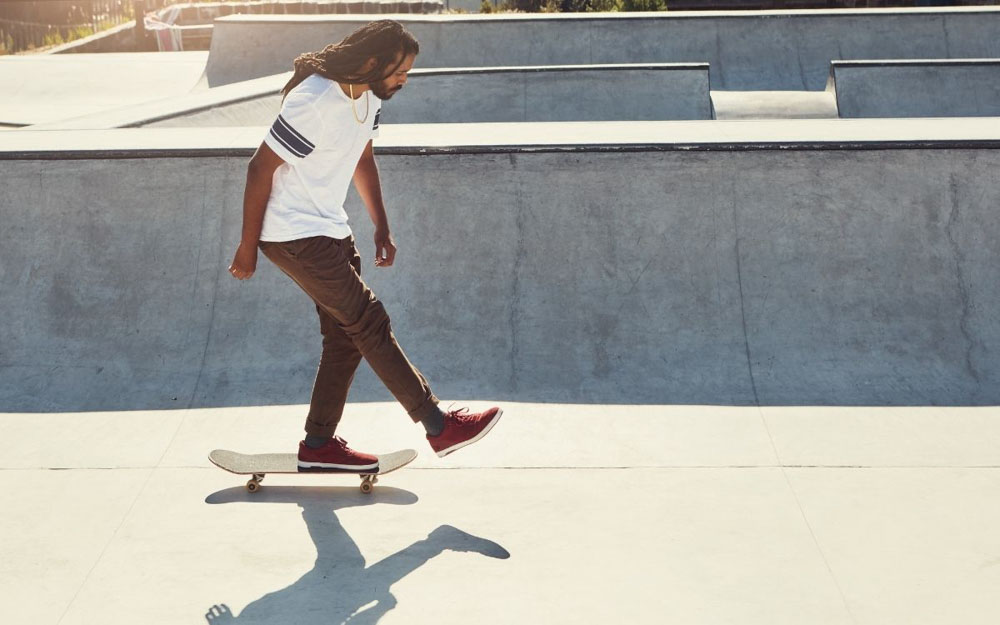
If you’ve gone through all the other solutions and your skateboard is still slow, it may be time to look at how you’re pushing. Many beginner skaters tend to overweight their pushing foot, which reduces the power output from each push. Luckily this is easy to fix.
When you’re pushing, keep your point your front foot forward over the front bolts of your board with your knee bent. Then, with your back foot, take it off the skateboard and place it on the ground, slightly ahead of where your front foot is on the skateboard.
Now, rather than placing most of your weight on the pushing foot, try to imagine keeping just 30% – 40% of that weight on your pushing foot. Then push yourself forward, leaving your pushing foot on the ground for as long as possible to maximize your power transfer.
If you over-weight the pushing foot, you can lose momentum and power from your weight transferring between your feet. Instead, try to think of your foot as a paddle in a canoe, pushing the water (aka the ground) away to propel yourself forward.
With this bit of change in your pushing, you will notice a big difference in how fast you can go with every push compared to before!
So by identifying why your skateboard is slow from what we talked about in this list, you can quickly find a solution to get rolling faster than ever. Half the fun of skateboarding is picking up speed and cruising around town. Neither of which is possible if you suffer from one of these seven common problems! Luckily they can all be fixed in just a few minutes so you can get back to skating and having fun.
Happy Shredding!
Brendan 🙂

